To successfully complete your orthodontic treatment plan, patients must work together with the orthodontist. The teeth and jaws can only move toward their corrected positions if the patient consistently wears the elastics (rubber bands), headgear or other appliances as prescribed. The following paragraphs describe the types of appliances that may be used during your treatment.
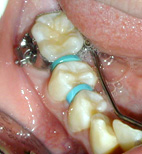
Separators (Spacers)
Separators are little rubber rings that may be placed between your teeth to push them apart so that orthodontic bands may be placed during your next appointment. The separators will be removed before we place the bands. To prevent separators from being removed prematurely, please avoid eating sticky foods and do not try to floss around them.
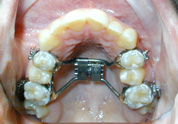
Palatal Expander
The palatal expander (widens) the upper jaw by putting gentle pressure on the upper molars each time an adjustment is made. Dr. Brodsky and his staff instruct their patients how often to activate the expander. Please watch this video to see how easy it is to activate this appliance.
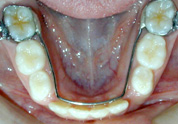
Lower Lingual Arch
This appliance is very important for our younger patients. It helps to hold space open for adult teeth when deciduous (baby) teeth are lost prematurely or normally. In most cases this appliance can prevent the need for extractions due to crowding.
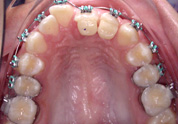
Bite Buttons
Bite buttons are made from small amounts of plastic bonding material. They are placed behind the upper teeth to assist in opening a deep bite. In addition, they can be placed behind the bottom teeth to aid in jumping a tooth out of crossbite.

HerbstŪ Appliance
The Herbst appliance reduces overbite by encouraging the lower jaw to grow forward and the upper molars to move backward. This fixed appliance is used mostly on young, growing children and is worn for about 12 months. It takes children approximately 4 days to adjust to this appliance.

Pendulum Appliance
The pendulum appliance is used in lieu of headgear on our older preteen and teenage patients. It gently pushes the upper molars backwards to create space for overly crowded teeth. Patients find it is very comfortable and will usually wear it for 3-4 months. After the required movement has been achieved a holding bar will be placed to maintain the correction for a few months.

Headgear
Headgear is used to treat patients who have either an "overbite" or an “underbite”. The headgear gently "pulls" on the upper teeth to restrict (in the case of an “overbite”) or enhance (in the case of an “underbite”) further forward growth of the upper teeth and jaw. At our office, headgears are rarely used on patients past the age of 10.
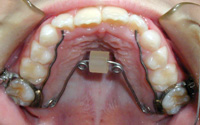
Habit Appliance
A habit appliance is used to help patients who have difficulty stopping finger or thumb sucking habits. This appliance usually resolves the problem in days.
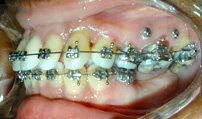
Miniscrews (TADs or Pins)
A miniscrew is a temporary device anchored to your dental bone to give the doctor 100% control of moving your teeth. They are only used in the toughest of situations when the doctor requires greater control of your braces. They have been routinely used in Korea and Japan for years, but have just recently (in 2003) gained acceptance in the United States. Because of this new technology, some patients who otherwise might have needed orthognathic (jaw) surgery or dental implants (to replace missing teeth) can be treated with braces alone without surgery.
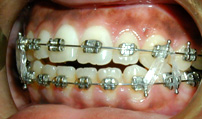
Elastics (Rubber Bands)
Wearing elastics (rubber bands) helps correct the bite of your upper and lower teeth by locking the teeth into a perfect alignment. It is important that the patient wears the elastics as prescribed to successfully complete their orthodontic treatment.

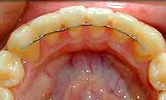
Retainers
Retainers may be removable or fixed. They hold your teeth in their new, correct positions after they have been straightened. Dr. Brodsky and his staff will instruct you on how to care for your retainer and about the duration of the wear. Wearing retainers as directed is crucial to prevent the teeth from relapsing.